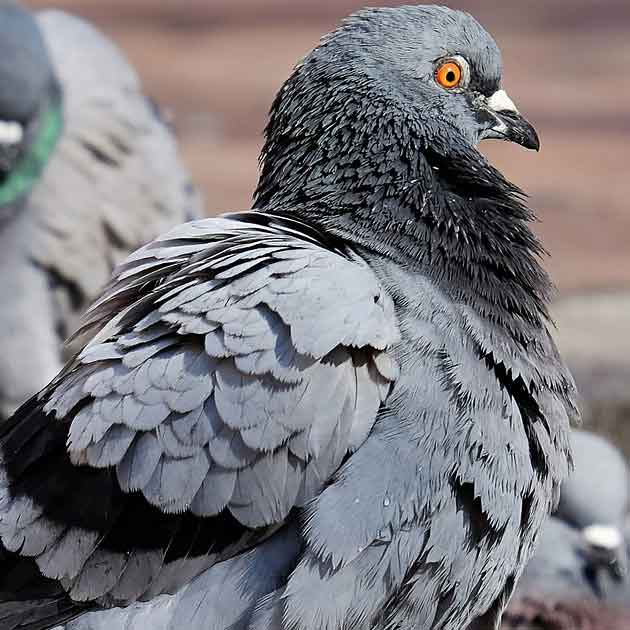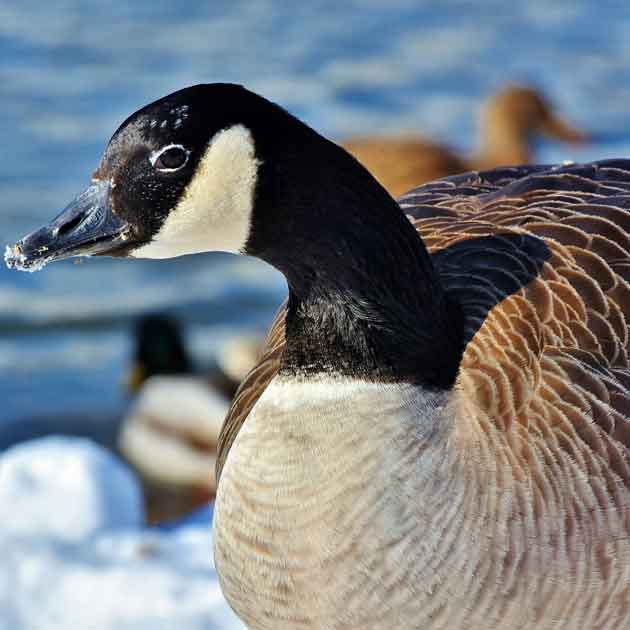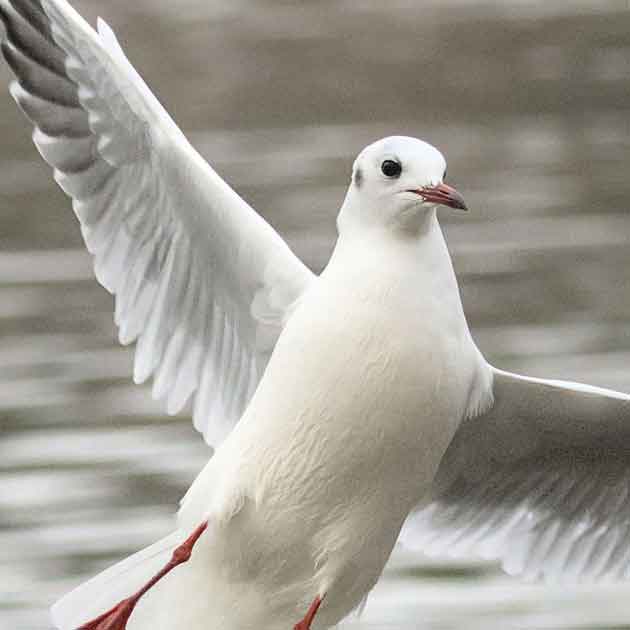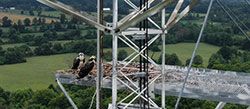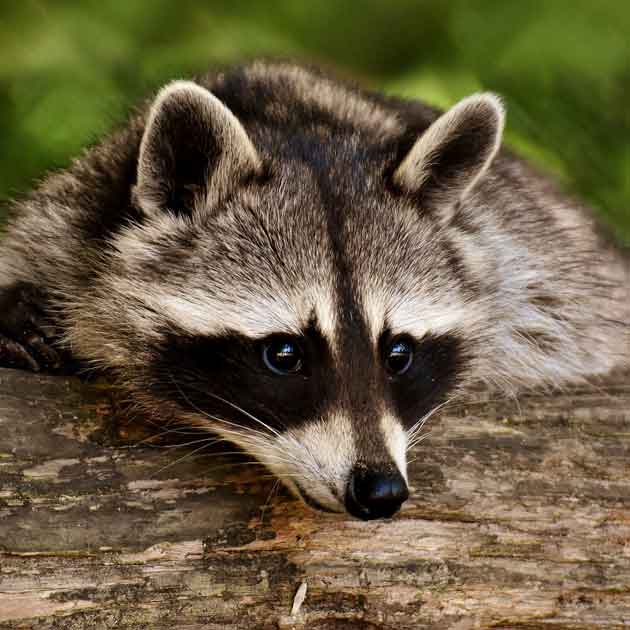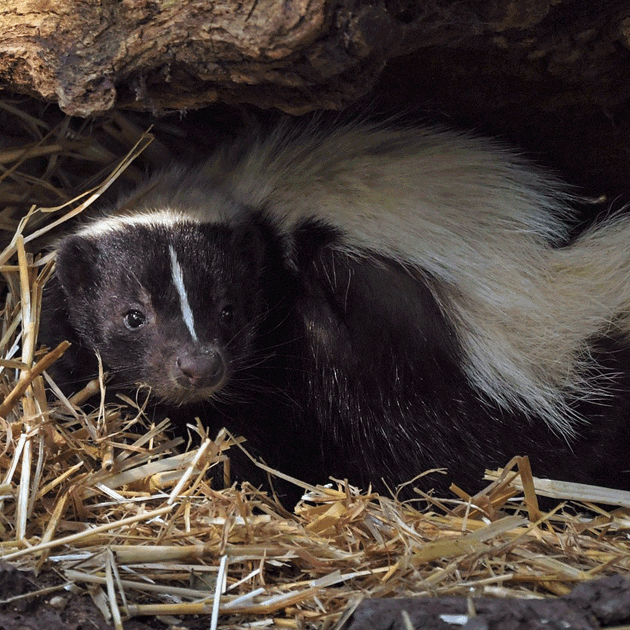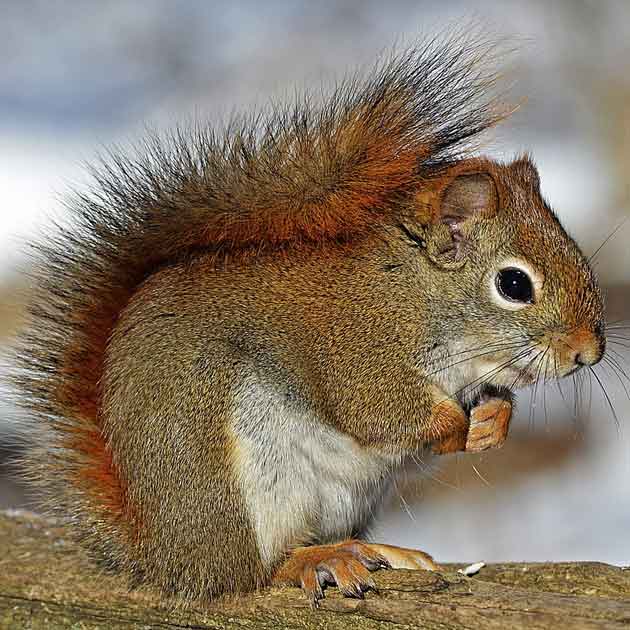Large flocks of birds (and other wildlife) are frequent visitors at landfills all across Canada. Other than negative impacts on bird health, what are some concerns?
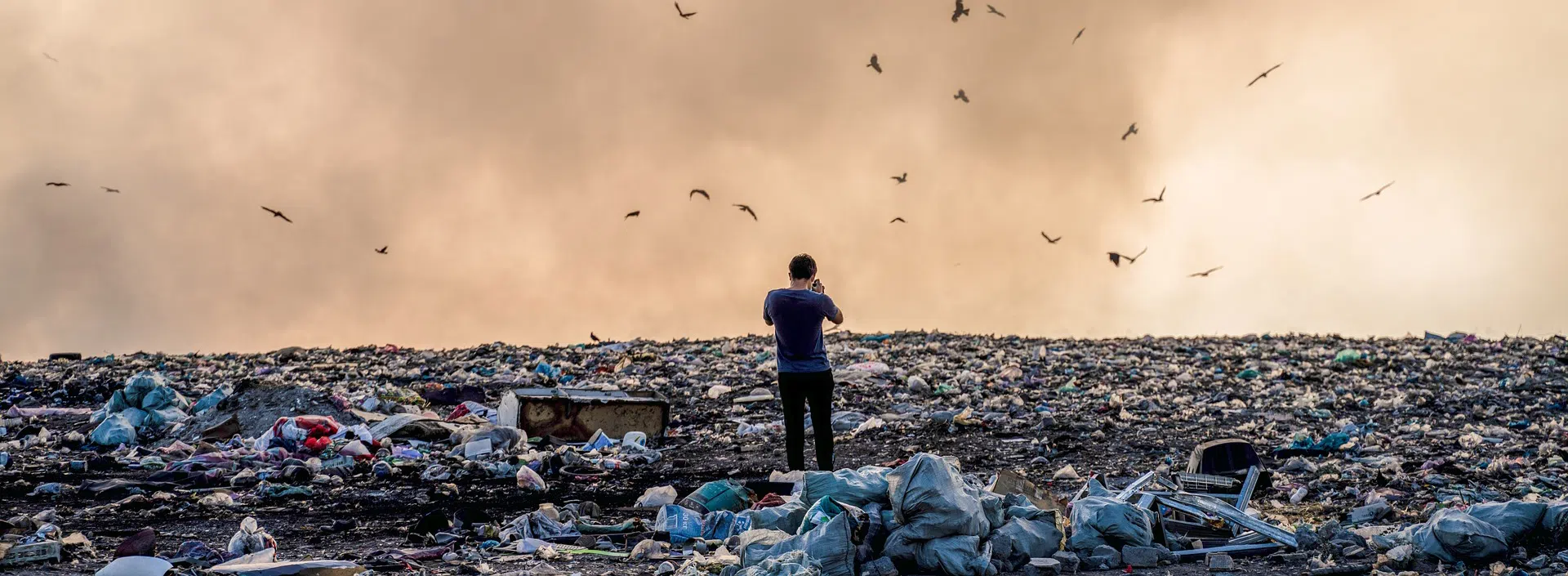
Why are there so many birds at Landfills and Transfer Stations?
Landfills remain the most common method for disposing of human trash, and attract a large variety of birds. The large quantities of food scraps found in active areas of trash disposal at landfills can dramatically alter bird ecology, with consequences for their populations and health.
What type of Birds are commonly found at Landfills?
Food resources at active landfills support carnivorous and scavenging species including:
- White Stork
- Bald Eagle
- Ring-billed Gull
- Turkey Vulture
- Crows
- Blackbirds
- Pigeons
- Starlings
What is the Issue with Birds at Landfills?
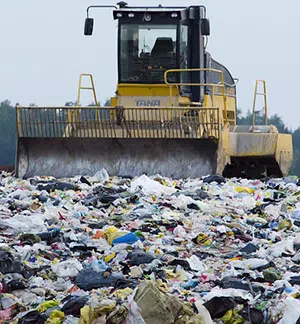 The food birds find in landfills can compensate for reductions in natural food availability and are thought to contribute to global increases in gull populations in spite of huge decreases in their natural marine-derived prey for the gulls. Landfills may also negatively influence biodiversity, by reducing abundance of sensitive species, directly through exposure to contaminants and pathogens, and indirectly by supporting human-adapted and exotic invasive species that outcompete some native species. Birds are a natural part of the ecosystem and their presence at landfill sites and transfer stations can pose significant risks, especially as vectors for infectious diseases. It is quite common to see huge swarms of birds at landfills and transfer stations because of the abundance of food found in the garbage. This can and does lead to ecological and public health concerns.
The food birds find in landfills can compensate for reductions in natural food availability and are thought to contribute to global increases in gull populations in spite of huge decreases in their natural marine-derived prey for the gulls. Landfills may also negatively influence biodiversity, by reducing abundance of sensitive species, directly through exposure to contaminants and pathogens, and indirectly by supporting human-adapted and exotic invasive species that outcompete some native species. Birds are a natural part of the ecosystem and their presence at landfill sites and transfer stations can pose significant risks, especially as vectors for infectious diseases. It is quite common to see huge swarms of birds at landfills and transfer stations because of the abundance of food found in the garbage. This can and does lead to ecological and public health concerns.
Public Health Concerns in Regards to Birds in Landfills
The high density of birds increases the potential for disease transmission from bird to bird, birds to other wildlife and birds to humans.
Vectors and Vector-Borne Diseases
A vector is a living organism that transmits an infectious agent from an infected animal to a human or other animal. Vectors are frequently arthropods, such as mosquitoes, ticks, flies, fleas and lice. Birds and animals can also be vectors. Vectors can transmit infectious diseases either actively or passively:
- Biological vectors, such as mosquitoes and ticks may carry pathogens that can multiply within their bodies and be delivered to new hosts, usually by biting.
- Mechanical vectors, such as flies can pick up infectious agents on the outside of their bodies and transmit them through physical contact.
These diseases that are transmitted by vectors are known as vector-borne diseases. Vector-borne diseases encompass a variety of diseases that are caused by the spread of pathogens by living organisms - vectors. These diseases can be human to human, animals to animals, animals to human, or bloodsucking insects to animals and humans.
Vector borne diseases account for more than 17% of all infectious diseases world wide. Some vectors are able to move considerable distances, for example: travel of humans internationally; animal movement - ie; livestock, migratory birds; or even through the wind.
Bird Feces or Guano
Birds are known to carry over 60 different diseases in them and on them. They also poop and their poop (or feces, guano) also carry these diseases. The most common of these diseases are:
- Histoplasmosis - a fungus that grows in bird feces can cause respiratory illness in people and can become life threatening in immunocompromised people;
- Candidiasis - also a fungal infection that can affect your skin, mouth, intestines, respiratory system;
- Salmonellosis - a bacterial infection often occurs as food poisoning and produces gastrointestinal pain and discomfort, diarrhea, fever, dehydration, chills, nausea and vomiting;
- Campylobacter spp - a common cause of gastrointestinal illness from bacterial infection. Usually found in poultry, it can also be present in animal feces;
- Chlamidia psittaci - can cause a respiratory disease in humans;
- E coli - a bacterial infection - present in human and animal feces and in birds, also found in cows and other farm animals. Birds eat seed from cow poop and then in turn spread the bacterial infection;
- Encephalititis - a virus that can cause death to those who are immunocompromised;
- Avian Influenza;
- West Nile Virus;
- Ectoparasites - like bedbugs and mites.
These diseases can easily be transmitted to humans via bird feces - the bird feces contaminates whatever it falls on, land or water. When the feces dries the contamination can become air borne when disturbed and be inhaled.
Dried Feces becoming Airborne
Dried bird droppings present a big problem when in large amounts and disturbed. The particles in the droppings are easily airborne, becoming aerosolized. Walking across ground with dried bird droppings is enough to disturb the particles and create the dust that becomes airborne. Anyone coming into contact with the airborne droppings can very easily breathe in any diseases that may be present. People working or living in the vicinity of places where large flocks of birds tend to congregate are at risk.
Bird Feathers
Birds also pick up pathogens on their feathers, feet or their beaks when scavenging for food - or from other birds when they come into contact with them. Direct contact with humans is a big risk particularly for workers at landfill sites or transfer stations and for the people who live or work near such sites. Picking up a feather that has fallen from a bird or touching a dead bird can expose you to any or all of the diseases that bird has carried.
Other Wildlife
Wild animals can and do get into waste management facilities to eat the trash and the birds. These wild animals can become vectors of disease themselves because of the close proximity to the pathogens. It isn’t unusual for zoonotic disease outbreaks to occur when the pathogens jump species - bird to animals to humans. When waste is not properly managed, this is more likely to occur. Some zoonotic diseases can have grave public health implications.
Risk to Public Works Employees
It is highly recommended for anyone working outside in the vicinity of large flocks of birds wear personal protective equipment - face mask with respirator, to prevent breathing any pathogens, and to use proper cleaning solutions to kill any pathogens that are present before they become airborne.
Birds feeding at landfills and transfer stations pose significant risk to human and animal health due to the many pathogens present in waste materials. Workers at or near these facilities face the highest risk because of their close proximity day in and day out. They have prolonged exposure to contaminated waste and bird droppings. If the landfills and transfer stations don’t follow strict protocols that are put in place by law, contamination can and will spread beyond the boundaries of the facilities, especially waterborne or airborne pathogens.
Beyond Public Health
Disruption of Ecosystems
Beyond public health implications, birds and wildlife at any waste management facilities will disrupt the local ecosystems. Birds have been known to change their migration patterns and not need to go so far south to winter because of the abundance of available food. This leads to loss of biodiversity because what the birds would normally eat - insects, seeds, fruit, and then get spread through their droppings, changes the soil composition and nutrient cycles leading to loss of vegetation. The scavenger birds that are attracted to waste management sites push out other native species of birds. This changes the ecosystem and the biodiversity of an area around the landfills and transfer stations.
Transfer or Relocation of Contaminated Items
Birds do not limit themselves to staying on the waste management sites. When they move to other locations, they often carry garbage from the sites with them. As they start spreading this garbage, they are also spreading diseases by exposing waste that hasn’t been properly covered. Landfills have many regulations that they must obey in order to keep the sites safe and sanitary; however, they have very little control over the birds’ actions.
To mitigate these risks, it is important for the landfills to follow the regulations and regularly cover the waste with soil or other materials to reduce the birds access to the food. Many municipalities encourage composting of food waste to reduce the overabundance of food in landfills. Composting is good for the soil, it helps retain moisture in the soil and suppresses plant diseases and pests. It also encourages the production of beneficial bacteria in the soil and reduces the methane emissions from the landfill sites.
Successful Measures to reduce the number of Birds at Landfills
Falconry - Birds of Prey
Bird control measures are a significant mitigation strategy. Using falconry - trained birds of prey - to scare away birds scavenging in the landfill is a natural and effective first line of defence. Birds of prey are, of course, predators to any birds. As soon as a hawk or a falcon is within sight most of the scavenging birds will fly off and relocate.
Physical Barriers
Installing netting and physical barriers can keep a good number of birds away from the waste.
Acoustic Deterrents
There are also acoustic and visual deterrents that can be used to scare birds away, but, their success is limited. Birds tend to get used to them fairly quickly when they pose no actual threat to the life of the birds.
New Technologies to break down Waste faster
The future for waste management looks promising for reducing infectious agents and the number of birds at landfills sites and transfer stations. There are new technologies being implemented at many sites, including a renewable energy program that collects gas (like methane) that can produce hundreds of thousands of megawatt-hours of electricity annually. Anaerobic digestion is where microorganisms are added to waste in a sealed container with no oxygen, to break down the waste at a much faster rate and produces methane. The nutrient rich byproduct can be used as fertilizer which is great for soil amendment suitable for agriculture. The methane is used for power generation. Having that much trash in sealed tanks that is turned over fairly quickly, birds aren’t able to get near the trash being treated and the byproduct has no nutritional value for the birds.
Hawkeye - The Landfill Bird Control Experts
Hawkeye Bird & Animal Control has over 30 years of experience using falconry for bird abatement at landfill sites and transfer stations. Our trained falconers have the knowledge, skills and experience to help you with any bird problem. With our hawks, falcons, and eagles, we have the solution for you. Contact us today to discuss your bird control needs at landfills or transfer stations.


